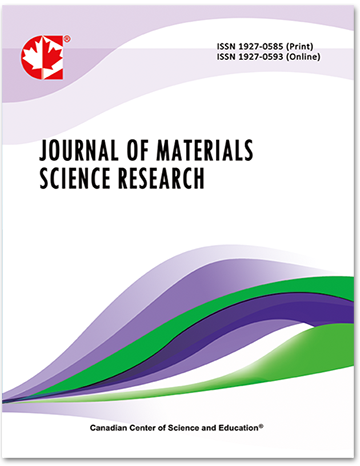Solid-State Characterization of Heteropolyacid-Phyllosilicate Complexes: Structural, Morphological and Thermal Properties
- Pascal Y. Vuillaume
- Asmae Mokrini
- Lucie Robitaille
- Philippe Bébin
- Lori Leblond
Abstract
We have previously described the complex formation from a synthetic smectite clay, Sumecton SA (SSA), and the heteropolyacid (HPA), 12-phosphotungstic acid (PTA). Three new synthetic layered aluminosilicate clays of the smectite- [Lucentite SWN (SWN)] and (fluoro)mica-type [Tetrasilicic mica (TSM); Somasif ME100, (SME)] have been self-assembled with PTA, at a specific PTA-clay weight ratio of 5. New protogenic inorganic complexes have been prepared for the future fabrication of proton exchange membrane for fuel cell devices (PEMFC). Complex formation, thermal and structural properties of PTA-phyllosilicate complexes have been investigated using EDX, XRD, SEM, and DRIFT. EDX indicates that complexes incorporate a substantial amount of PTA (50-60% w/w) and that a moderate depletion of Mg2+ ions from octahedral layers of micas clays occurs during the process compared to smectite ones. In contrast, a significant amount of F is removed from the octahedral framework of the mica clays. DRIFT experiments indicate that the Keggin structure is preserved within all complexes and that complex formation predominantly involves the external oxygen (W-Od) of PTA. According to Patterson functions, coherence lengths - which reflect for the virgin clays the extent of the longitudinal platelet stacking (Lc) - of the two smectite clays (Lc ~25 Å) are significantly lower than for their analogous of the mica type (Lc = 180-225 Å). Clays in complexes are characterized by the loss of in-plane organization but are still partially ordered. The nature of the order is still speculative but could be related to the formation of a new inorganic PTA species formed during the complex formation. Compared to the virgin clays, the order of smectite complexes is maintained in the same range (Lc = 27-42 Å) while for mica complexes, coherence lengths are dramatically reduced to ~ 60 Å. All PTA-activated complexes contain a substantial amount of amorphous silica, which tends to increase when heated at temperatures above 280 oC. However, the Keggin structure within the complexes is at least stable up to 280 oC and even, for the most robust TSM complex, up to 450 oC.
- Full Text:
 PDF
PDF
- DOI:10.5539/jmsr.v12n1p36
Journal Metrics
Impact Factor 2022 (by WJCI): 0.583
Google-based Impact Factor (2021): 0.52
h-index (December 2021): 22
i10-index (December 2021): 74
h5-index (December 2021): N/A
h5-median (December 2021): N/A
Index
- CAS (American Chemical Society)
- CNKI Scholar
- Elektronische Zeitschriftenbibliothek (EZB)
- EuroPub Database
- Excellence in Research for Australia (ERA)
- Google Scholar
- Infotrieve
- JournalTOCs
- LOCKSS
- NewJour
- PKP Open Archives Harvester
- Qualis/CAPES
- SHERPA/RoMEO
- Standard Periodical Directory
- Universe Digital Library
- WJCI Report
- WorldCat
Contact
- John MartinEditorial Assistant
- jmsr@ccsenet.org
